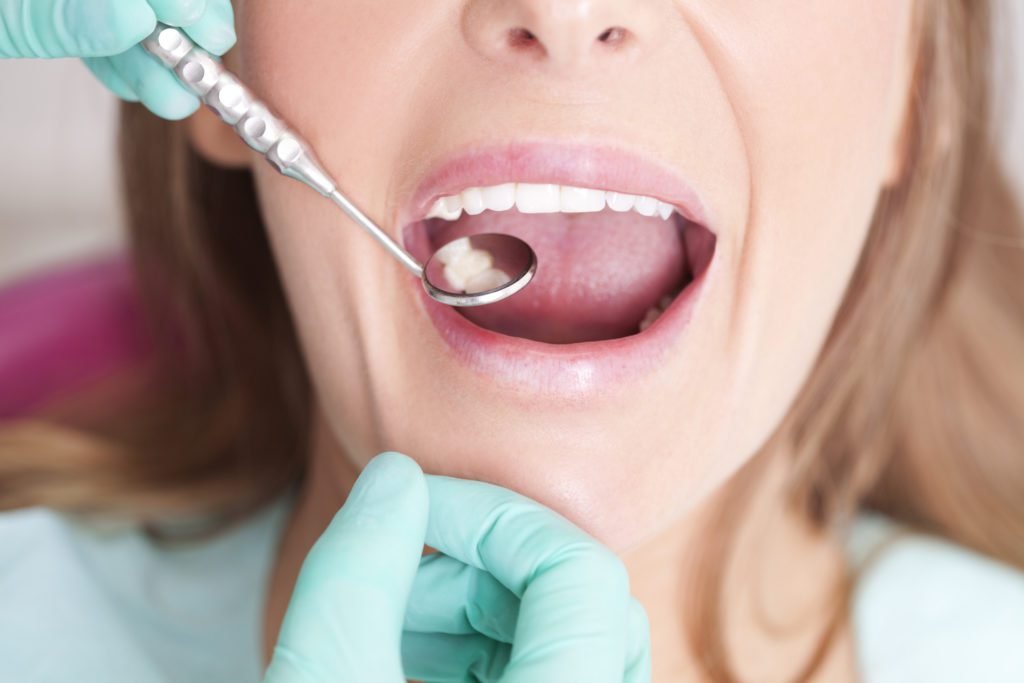Gum disease, also known as periodontal disease, is a common condition that affects the tissues surrounding and supporting your teeth. It begins as gingivitis, the mildest form of gum disease, and can progress to more severe forms, such as periodontitis, if left untreated. Gum disease not only threatens the health of your teeth and gums but is also linked to serious health issues like heart disease, diabetes, and stroke. Understanding the early signs of gum disease and knowing how to prevent it is essential for maintaining good oral health.
Early Signs of Gum Disease
The earliest stage of gum disease, gingivitis, is usually reversible with proper oral care. However, many people may not notice symptoms until the disease progresses. Here are the early signs of gum disease to look out for:
- Red, Swollen, or Bleeding Gums If your gums are redder than usual, swollen, or bleed when you brush or floss, it could be a sign of gingivitis. Healthy gums should be pink and firm, not tender or inflamed.
- Bad Breath (Halitosis) Persistent bad breath or a bad taste in your mouth can indicate gum disease. This occurs because bacteria in the gums release toxins that contribute to unpleasant odors.
- Receding Gums If your gums seem to be pulling away from your teeth, exposing more of the tooth or its root, it’s a sign that your gum tissue is beginning to deteriorate. Receding gums can cause your teeth to appear longer than usual.
- Loose or Shifting Teeth As gum disease progresses, it can lead to the breakdown of the structures that support your teeth. This can cause teeth to become loose or shift positions, affecting your bite.
- Pain or Sensitivity When Chewing Gum disease can cause discomfort when chewing or increased sensitivity to hot, cold, or sweet foods. This happens due to the loss of tooth-supporting tissues and exposure of sensitive areas of your teeth.
Causes of Gum Disease
The primary cause of gum disease is the buildup of plaque—a sticky film of bacteria—on your teeth. Plaque produces toxins that irritate the gums, leading to inflammation and infection. Other factors that contribute to gum disease include:
- Poor Oral Hygiene: Inadequate brushing and flossing habits allow plaque to accumulate, increasing the risk of gum disease.
- Smoking or Chewing Tobacco: Tobacco use weakens your immune system and makes it harder for your gums to heal.
- Poor Nutrition: A diet lacking in essential nutrients, particularly vitamin C, can increase your risk of gum disease.
- Hormonal Changes: Pregnancy, menstruation, and menopause can affect gum health, making gums more vulnerable to infection.
- Certain Medications: Some medications can reduce saliva flow, increasing the risk of gum disease.
- Medical Conditions: Conditions like diabetes or diseases that affect the immune system can make it harder for your body to fight off gum infections.
Treatment Options for Gum Disease
The treatment for gum disease depends on the severity of the condition. For mild gum disease (gingivitis), treatment can often be done at home, while more advanced cases may require professional care. Here are the common treatment options:
- Professional Dental Cleaning The first step in treating gingivitis is a professional cleaning by a dentist or hygienist. This process removes plaque and tartar buildup from the surfaces of your teeth, helping to reduce gum inflammation. After the cleaning, your dentist may provide advice on improving your at-home oral hygiene routine.
- Scaling and Root Planing (Deep Cleaning) For more advanced gum disease (periodontitis), scaling and root planing may be required. This procedure involves cleaning the surfaces of your teeth and the roots below the gumline. Scaling removes tartar, while root planing smooths the tooth roots to prevent further plaque buildup. In some cases, antibiotics may be prescribed to help eliminate bacteria.
- Gum Surgery If gum disease is severe and doesn’t respond to non-surgical treatments, surgical procedures may be necessary. These can include flap surgery (pocket reduction surgery), where the gums are lifted to remove tartar beneath the gumline, or tissue grafts to help regenerate lost gum tissue.
- Laser Therapy Laser therapy is an advanced option for treating gum disease, involving the use of a laser to remove infected tissue and promote gum regeneration. It’s less invasive than traditional surgery and can be performed with minimal discomfort and recovery time.
- Antibiotics For both gingivitis and periodontitis, your dentist may prescribe topical or oral antibiotics to help control infection. Antibiotic gels or rinses can be applied directly to the gums, or you may be prescribed oral antibiotics to help reduce the number of bacteria in your mouth.
Preventing Gum Disease
The best way to treat gum disease is to prevent it in the first place. Follow these simple steps to maintain healthy gums and teeth:
- Brush Twice a Day Brush your teeth at least twice a day with fluoride toothpaste to remove plaque and prevent gum disease. Make sure to brush along the gumline and on the back of your teeth.
- Floss Daily Flossing removes plaque from between your teeth and under the gumline, where your toothbrush can’t reach. This helps prevent the buildup of plaque that can lead to gum disease.
- Eat a Balanced Diet A diet rich in fruits, vegetables, and whole grains can help promote healthy gums. Avoid sugary and acidic foods that can lead to plaque buildup and tooth decay.
- Don’t Smoke or Chew Tobacco Tobacco use is a major risk factor for gum disease. Quitting smoking or chewing tobacco can significantly improve your gum health and reduce your risk of gum disease.
- Visit Your Dentist Regularly Regular dental checkups are crucial for maintaining good oral health. Your dentist can detect early signs of gum disease and provide professional cleanings to remove plaque and tartar before they cause problems.
- Manage Stress Stress can weaken your immune system and increase your risk of developing gum disease. Practice stress-reducing techniques, such as exercise, meditation, or deep breathing, to support overall health.
Conclusion
Gum disease is a serious condition that can affect your overall health if left untreated. By recognizing the early signs and seeking treatment promptly, you can prevent the progression of gum disease and maintain a healthy smile. Follow good oral hygiene habits at home, visit your dentist regularly, and take steps to reduce your risk factors to keep your gums and teeth in top condition.
References
- American Dental Association (ADA). (2021). Gum Disease: What You Need to Know. Retrieved from https://www.ada.org
- Mayo Clinic. (2021). Gum Disease: Symptoms, Causes, and Treatment. Retrieved from https://www.mayoclinic.org
- National Institute of Dental and Craniofacial Research (NIDCR). (2022). Periodontal Disease. Retrieved from https://www.nidcr.nih.gov
4o mini

